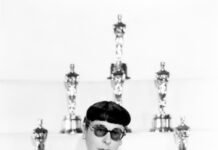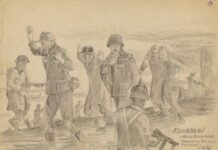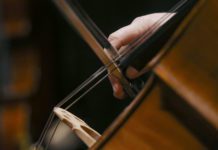For 35 years, Osage County resident Kreg Kallenberger has turned out glass sculptures that garner acclaim around the world. He works from his studio on 100 Monkeys Ranch, a restored dairy farm, north of Tulsa. The University of Tulsa graduate received an NEA Artist’s Fellowship Grant in 1984 and has taught worldwide. His pieces are on display in museums across the globe.
Oklahoma Magazine: Why glass? It can’t be the easiest medium to work in.
Kreg Kallenberger: It was just circumstances. I was at the University of Tulsa working on a pottery degree. My professor and mentor got interested in glass, so I caught the bug, as well. Glass was just completely unknown and fascinating to me, but it had a lot of the same chemistry and mechanical properties as pottery. It seemed very spontaneous compared to pottery. Of course, being the way I am, I’ve turned it into something very labor-intensive and not spontaneous at all. But at the time it seemed like it was.
OM: Do you bring the shape to the glass or does the glass show the shape to you?
KK: It’s more the glass than me. I always start with an idea, but if I were just to follow that idea, I find that it generally ends up not as well articulated as it is when I listen to the glass. The material is always telling me what to do.
OM: Do you ever drop your work?
KK: Yeah. Sometimes they fall on the floor and break. But some of my best pieces have come from that. A piece falling over and cracking gives you a broken piece and you’ve got to solve that problem. It pushes you in a direction you wouldn’t have gone on your own because it’s glass. To me the best work comes when I’m solving problems. Otherwise, it’s just rote.
OM: A lot of your work seems to be the combination of sharp, well-defined edges with landscapes. Am I onto something here?
KK: It’s about the juxtaposition of very formal, crisp geometric forms with an organic exterior. Quite frankly, the glass is so damn beautiful to begin with that I’m always fighting to add some organic, natural, rough edge to it. I’m not trying to make Steuben glassware. In my Titanic series, there’s a clear sculpture with a little thing on the top of it. People read a lot into it, but basically the glass is so beautiful that I had to stick something on there that was not appropriate – some mark to distract the eye from just how pretty the material is. I’m not big on pretty.
OM: Your studio is in the middle of nowhere. How’d that happen?
KK: My wife found this place. She got lost and found this old dairy about an hour north of Tulsa. Completely dilapidated. For the most part it was just stone walls. We fell in love with it. We like being out in the middle of nowhere. So we came back and bought this old place and for the past 12 years I’ve been restoring all these buildings. And doing 99 percent of it myself. I’m a hands-on guy.
OM: Fair enough. Where’d the name come from?
KK: The way it got its name is that I immediately wanted to live here but my wife worked at Philbrook Museum in Tulsa. She collects sock monkeys. Been collecting them for 40 years. So she said she would move up here when she got to 100 sock monkeys. She didn’t, but we just started calling it the 100 Monkey Ranch. And now we’re stuck with it.

























